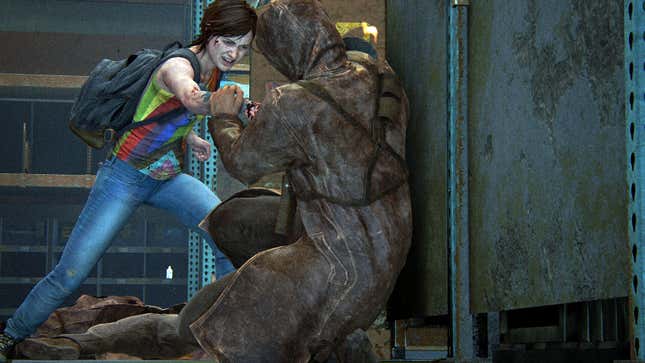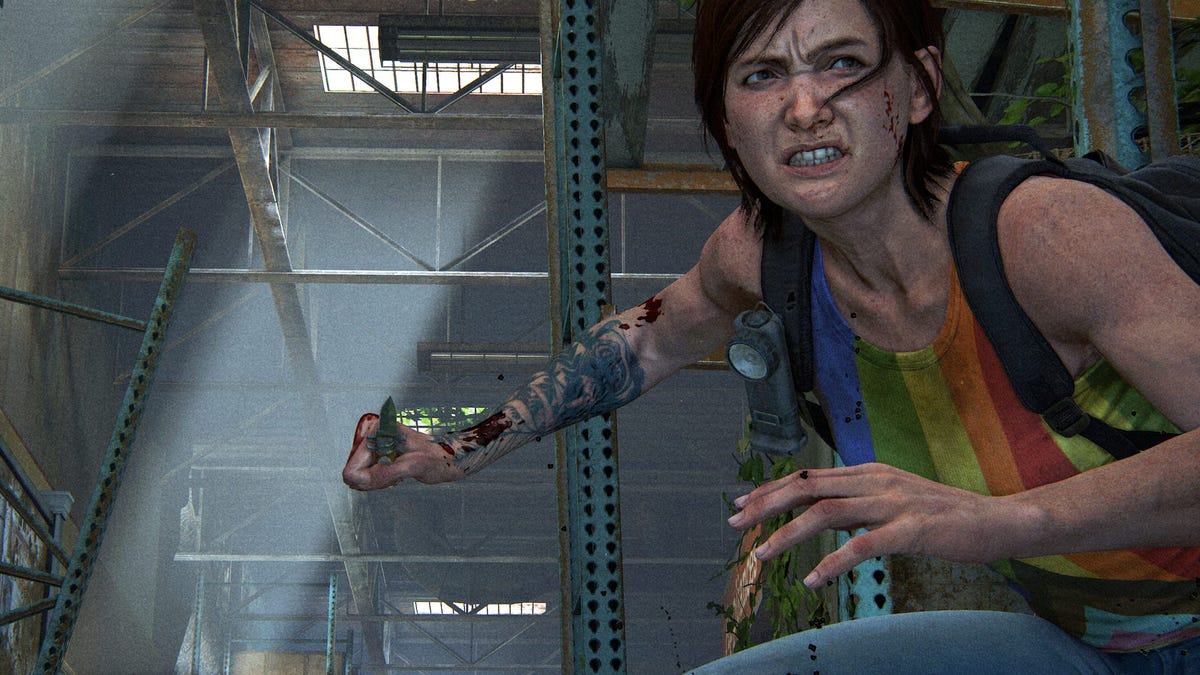The Last of Us Part II Remastered’s roguelike mode, No Return, is a prime example of how it’s nearly impossible for games made by hundreds to thousands of people to have a consistent thematic vision. See, director Neil Druckmann wants you to believe The Last of Us Part II is all about how the cycle of violence is bad, and the player should feel bad for taking part in it. But No Return remixes all the weapons, upgrades, infected monstrosities, religious cults, violent militias, and every way you can gut, shoot, and disembowel a person into a loop you can partake in. It’s a cycle of violence made into a video game mode.
For whatever it’s worth, I’ve always found The Last of Us Part II’s story to be poorly summed up by Naughty Dog’s marketing copy. Framing it as a metatextual guilt trip rather than an exploration of the all-encompassing, transformative nature of grief communicated through violence has been a years-long disservice to a series that has far more interesting things to say. But playing through No Return, the irony of seeing The Last of Us Part II Remastered so flippantly disregarding one of its supposed core themes is not lost on me.
But that is the nature of hundreds of people developing one video game. Creative vision when there are that many cooks in the kitchen will almost always falter in one way or another; the math is not always going to math. But for as much as Druckmann wants The Last of Us Part II to be about guilting the player for doing scripted murder, I admit I find the game’s combat to be incredibly rewarding and underrated, especially after the 60fps PS5 update made standard in the Remastered package.
Pre-order The Last of Us Part II Remastered: Amazon | Best Buy
Everyone’s invited
No Return is a combat showcase for all the game’s intricate stealth and crafting system, while offering some new playstyles and perspectives by allowing you to play as multiple characters. Though the Roguelike nature of No Return means you’ll unlock craftable items, weapons, and upgrades at random, everyone starts out with a baseline loadout that defines their initial playstyle. As they were in the story, Ellie is stealthier compared to Abby’s brute strength, but everyone has their own tweaks that make them unique. Yara is joined by her brother Lev as an assist, Joel, much like the first game, can’t dodge like most characters but is tankier and can take more hits. (A dodge would’ve been more helpful at the golf course, though, king.)
As a person who always preferred Ellie’s stealthy, ramshackle playstyle, No Return took time to click with me. Each encounter takes on different forms, such as the straightforward Assault mode, where enemies spawn in waves until you defeat them all, the survival-based Hunted mode, in which foes hone in on you until the timer runs out, or Capture, which puts a bunch of baddies between you and a safe full of resources that could help you on the next encounter. They’re each a microcosm of The Last of Us Part II’s encounter design made into a bite-sized battle, but initially, stealth failed me where brute force let me barrel through. Hunted, by design, makes stealth impossible, because enemies know where you are when they spawn, but if enemies appear in an inopportune place on the map, Assault’s not much more accommodating. No Return forced me to adapt, dropping my usual bow and silenced pistol for a shotgun and melee weapon combo.
I’m of mixed feelings on that, because No Return feels like it’s missing the emergent gameplay that made The Last of Us Part II’s combat compelling even when it was running at 30fps on the PS4. But it does feel in the spirit of the roguelike genre to force one to become comfortable with whatever tools you have, rather than meticulously crafting a playstyle that caters to what you’re used to wielding.

Luck of the draw
Between each encounter, I get currency to buy randomized weapons, resources, and items. Even if I pay for re-rolls, I often find myself using equipment that goes against my nature just because I’m about to fight another wave of Infected and I need something to put a Clicker down before it can one-shot me and end the entire run. It was restrictive to not to be able to rely on tried-and-true tactics, but liberating to realize that they weren’t always the most effective way of surviving a wave of enemies.
Some of the riffs on The Last of Us Part II’s combat feel a bit silly, such as the mods that introduce new challenges to each encounter. This can be non-factors, like the mirror mode that flips the screen, or actively dangerous twists like Molotov cocktails falling from the sky or enemies dropping pipe bombs when they die. Sure, they up the challenge, but they often feel like silly distractions from the pure combat of the average run. But honestly, the entire premise of a Last of Us roguelike is silly, and this isn’t a series like God of War that can make any of these looping ideas make sense.

Perhaps it feels like low-hanging fruit to think too hard about the implications of this mode being added to a game ostensibly about how violence is bad. But it is on my mind as I think about how The Last of Us as a franchise has gotten more diluted as time goes on. At its core, the series is just two games with a deeply intertwined narrative that is definitively about something (even if it doesn’t hold up under Druckmann’s framing), but it feels like every time Sony and Naughty Dog find a new way to monetize it, we’re losing the thread a little more.
No Return is great as a showcase for the intricate, often underrated combat systems crafted by Naughty Dog’s team. But it also feels like a betrayal of the series’ most profound revelations.
Pre-order The Last of Us Part II Remastered: Amazon | Best Buy
.


